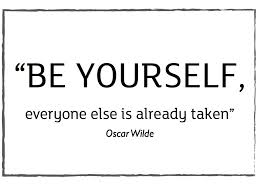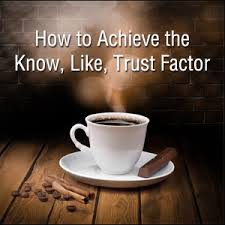 The world around you runs on ideas, thoughts, judgements and conclusions. Those you interact with help write your story. Some will fill in the blanks with a “good” story, others with a “bad” story. But, they are not the only ones influencing your story — you are also are critical to the story told, to your reputation.
The world around you runs on ideas, thoughts, judgements and conclusions. Those you interact with help write your story. Some will fill in the blanks with a “good” story, others with a “bad” story. But, they are not the only ones influencing your story — you are also are critical to the story told, to your reputation.
Ask people what they have too little of and odds are the response will be, “Time and money.” Usually in that order. With most of the world feeling the time crunch, people will naturally look for the fastest, shortest and easiest way to do things. Can you relate?
People are built, at least in my view, to look for the shortest and quickest path possible to a decision or the solution to their issue. Employers are people. Employers, especially hiring managers, seek information from others to help solve their problems and get more done, in less time.
This is where your reputation [a.k.a., your personal brand] comes into play. Your reputation includes what others think and feel when they interact with you -AND- what others are saying about you. These things speak volumes and impact your success and the speed at which you land your next position.
As a kid, my mother would say, “Cindy, your reputation precedes you. Think about who you hang out with and what you do.” I did not get it then. I saw it as nagging and assumed she just didn’t like my group of friends. However, she was right.
A reputation, whether great, good, neutral, poor or bad, is critical. Your reputation alone can be the reason you receive an interview, or not.
Recently, I read a description of your reputation as a “shadowy twin.” A twin that is everywhere and ensures you are in two places at once. Be sure your “shadowy twin” is helping you rather than causing harm to your career.
You and your reputation are always evolving. If you are currently seeking a promotion, are in career transition, or thinking of a career move, pause and look at your reputation.
Discover how to be your own best ambassador, both in person and online. Understand how others view you. Leverage that information to enhance your online profiles and all your professional and personal communication.
As people, including recruiters and hiring manager, seek to make quick decisions and draw conclusions about your value and whether or not to offer you an interview, make sure your reputation is working for you. Don’t let your LinkedIn profile, resume or emails wound — or worse yet — assassinate your career.
What time or energy have you invested in positively communicating you reputation?
How do others view you?
When was the last time you paused and really looked at how your unique values comes across to those who are making hiring decisions?
Do you have a question about communicating your reputation? Post it below or contact me.
personal branding, reputation
 Have you been asking yourself, “Is it time for a move to the next level?” Maybe you’ve been wondering what you want to do next or asking yourself, “What do I want to do when I retire?”
Have you been asking yourself, “Is it time for a move to the next level?” Maybe you’ve been wondering what you want to do next or asking yourself, “What do I want to do when I retire?” “You can trust people, trust them to be exactly who they are every time” – Mastin Kipp
“You can trust people, trust them to be exactly who they are every time” – Mastin Kipp
 A common question I hear is, “How do I add a part-time job to my resume and/or LinkedIn profile?”
A common question I hear is, “How do I add a part-time job to my resume and/or LinkedIn profile?”








